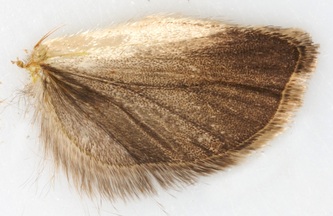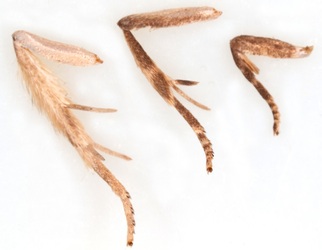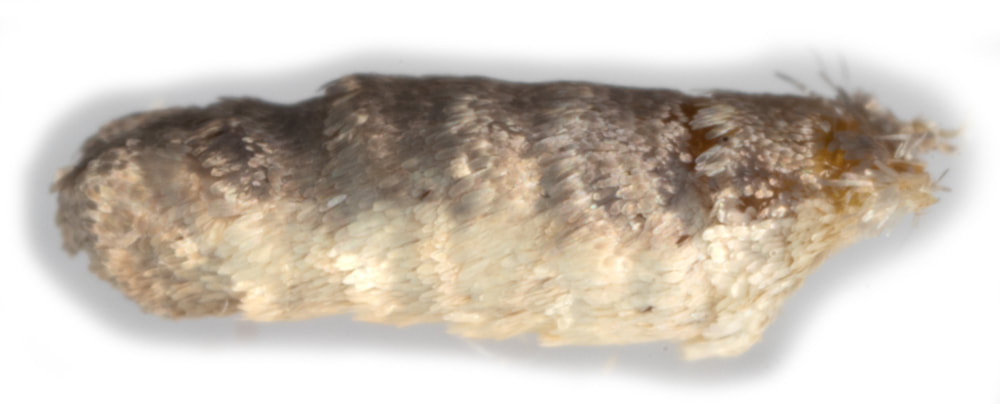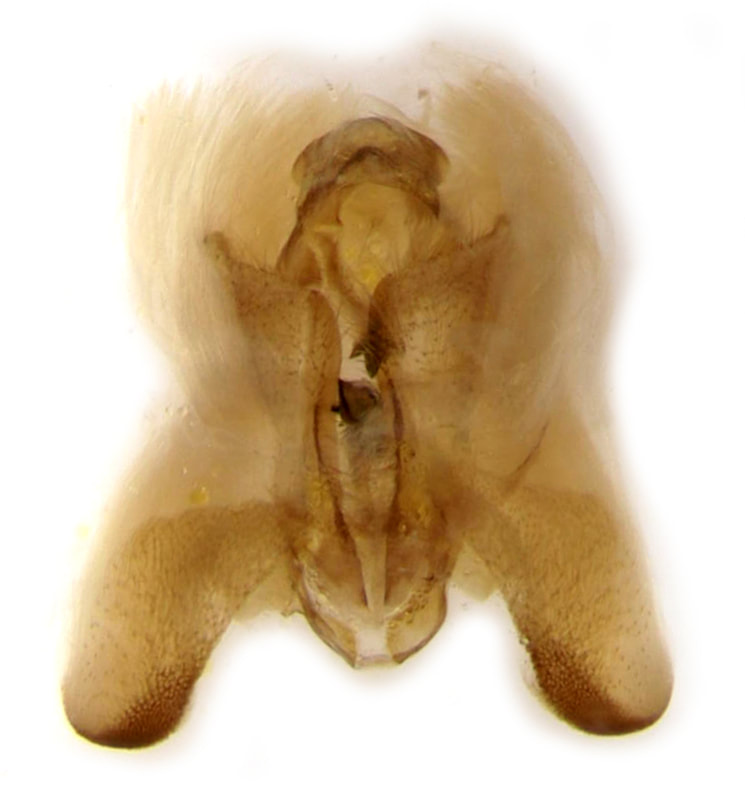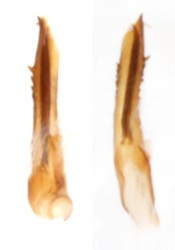49.026 Pandemis heparana (Dark fruit-tree Tortrix)
ws: 16-24mm; Jun-Sep; various trees and shrubs; common throughout GB
ID: The 5 British Pandemis species are similar. Males show a deep sinus at the base of the antenna (does this provides a separation from Choristoneura?)
P.corylana has an oblique distal margin to the basal fascia so that it is more or less parallel with the proximal margin of the median fascia.
P.cinnamomeana also has an oblique distal margin to the basal fascia; the male has a white frons and the female has a reddish tinge to the hindwing apex.
P.heparana is distinguished by an angular projection of the proximal margin of the median fascia.
P.dumetana usually has a distinct dark stria from the triangular pre-apical spot towards the tornus; it has a whitish/pale grey hindwing.
Both P.cinnamomeana and P.heparana have a darker red-brown ground colour than most examples of P.cerasana, but some examples of P.cerasana can be quite dark and there is overlap. P.cerasana sometimes has a projection from the proximal margin of the median fascia, though this tends to be a smooth curve rather than angular - but it is sometimes difficult to make this distinction. BTM states that the distal margin of the basal fascia of P.heparana is more or less transverse, as for P.cerasana. However, at least one of the plates in BTM, all my specimens identified as this species and many web images labelled as this species show a central projection and dorsal emargination of the distal margin of the basal fascia. (Most of the web images that do not show this feature also lack an angular projection of the median fascia - suggesting they may be incorrectly labelled).
Male Genitalia: All Pandemis species are illustrated in Pierce and Metcalfe and all except P.dumetana are shown at dissection group.
P.heparana is the only one of these species to show a projecting rather than notched apex to the uncus.
P.corylana has an oblique distal margin to the basal fascia so that it is more or less parallel with the proximal margin of the median fascia.
P.cinnamomeana also has an oblique distal margin to the basal fascia; the male has a white frons and the female has a reddish tinge to the hindwing apex.
P.heparana is distinguished by an angular projection of the proximal margin of the median fascia.
P.dumetana usually has a distinct dark stria from the triangular pre-apical spot towards the tornus; it has a whitish/pale grey hindwing.
Both P.cinnamomeana and P.heparana have a darker red-brown ground colour than most examples of P.cerasana, but some examples of P.cerasana can be quite dark and there is overlap. P.cerasana sometimes has a projection from the proximal margin of the median fascia, though this tends to be a smooth curve rather than angular - but it is sometimes difficult to make this distinction. BTM states that the distal margin of the basal fascia of P.heparana is more or less transverse, as for P.cerasana. However, at least one of the plates in BTM, all my specimens identified as this species and many web images labelled as this species show a central projection and dorsal emargination of the distal margin of the basal fascia. (Most of the web images that do not show this feature also lack an angular projection of the median fascia - suggesting they may be incorrectly labelled).
Male Genitalia: All Pandemis species are illustrated in Pierce and Metcalfe and all except P.dumetana are shown at dissection group.
P.heparana is the only one of these species to show a projecting rather than notched apex to the uncus.
Dissection
Male genitalia
Female genitalia
§1 Foulness, Essex; 05/08/2007; male; fw 8.6mm
§2 New Forest, Hampshire; 27/06/2008; male; fw 9.7mm
§3 Cockshoot Broad, Norfolk; 14/07/2008
§4 Foulness, Essex; 20/07/2008
§5 Foulness, Essex; 04/07/2010; female
§6 Strumpshaw Fen, Norfolk; male; 23/08/2012
§7 Foulness, Essex; 05/08/2012; male; fw 9.0mm
§8 Foulness, Essex; 13/08/2016; female; fw 9.1mm
§9 Cliburn Moss; 03/08/2019; male; fw 8.2mm
All images © Chris Lewis
§2 New Forest, Hampshire; 27/06/2008; male; fw 9.7mm
§3 Cockshoot Broad, Norfolk; 14/07/2008
§4 Foulness, Essex; 20/07/2008
§5 Foulness, Essex; 04/07/2010; female
§6 Strumpshaw Fen, Norfolk; male; 23/08/2012
§7 Foulness, Essex; 05/08/2012; male; fw 9.0mm
§8 Foulness, Essex; 13/08/2016; female; fw 9.1mm
§9 Cliburn Moss; 03/08/2019; male; fw 8.2mm
All images © Chris Lewis
Page published 08/05/2012 | Specimen §6 added 08/11/2012 | §7 added 04/02/2013 | §8 added 07/05/2017 | §9 added 22/10/2019














